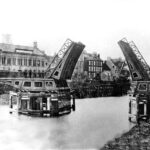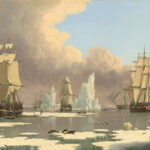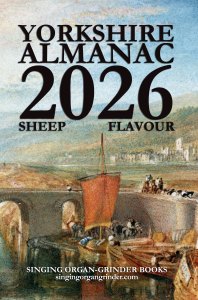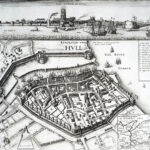24 January 1805: Painter Joseph Farington hears how Julius Caesar Ibbetson left his (Caesarian) birthplace of Farnley Moor (Leeds) to pursue a career in art in Hull
Joseph Farington. 1924. The Farington Diary, Vol. 3 (September 14, 1804, to September 19, 1806). Ed. James Greig. London: Hutchinson and Co. Get it:
.Excerpt
He had a strong inclination to painting excited in him he scarcely knew how, and his father encouraged the feeling. Seeing an advertisement for an apprentice to a painter, he went with his father to Hull, 70 miles distant, to the person who advertised, and there saw all the implements of the art but nothing more. Confiding that the advertiser was an artist, Ibbetson was bound apprentice to him, but immediately found that his occupation was only to be to get his master money by painting from daylight to night the inside and outside of ships in the port of that town. His remonstrances against this were ridiculed by his master, and he could only practise drawing and other painting at stolen hours. He did, notwithstanding, so far advance in the art as to paint several signs which were much admired. At the end of five years, his master proposed to quit the business and to sell the remainder of his time – two years – to a person who was to succeed to it, on which Ibbetson ran away from Hull and came to London, where he got employ from a person who had previously been under his Hull master. While in this situation he obtained admission into Mr West’s house, where he painted a chest for one of the servants, and where for the first time he saw pictures which excited in him a feeling “which affected his very toes.”
Comment
Comment
Something to say? Get in touch
Original
West shewed us a letter recd. by Him from Julius Ibbetson in 1782, in which He gives a short history of His progress in the art. He was born a few miles from Leeds in Yorkshire,—had a strong inclination to painting excited in Him he scarcely knew how,—and His Father encouraged the feeling.—Seeing an advertisement for an apprentice to a Painter, He went with His Father to Hull, 70 miles distant, to the person who advertised, and there saw all the implements of the art but nothing more. Confiding that the advertiser was an artist, Ibbetson was bound apprentice to him, but immediately found that His occupation was only to be to get His master money by painting from daylight to night the inside & outside of Ships in the Port of that town.
His remonstrances against this were ridiculed by His Master, & He could only practise drawing & other painting, at stolen Hours. He did, notwithstanding so far advance in the art as to paint several Signs which were much admired.—At the end of 5 years, His Master proposed to quit the business & to sell the remainder of His time, viz: 2 years, to a person who was to succeed to it; on which Ibbetson ran away from Hull and came to London, where He got employ from a person who had previously been under His Hull master.
While in this situation He obtained admission into Mr. West’s House in Newman St. where He painted a chest for one of the Servants, & where for the first time He saw pictures which excited in Him a feeling “which affected His very toes” —In 1788 He laid out a solitary half guinea to subscribe to a print to be engraved of the Battle of La Hogue, and being afterwards told that Mr. West wd. let him have an impression witht. paying the remainder in 1782 He wrote the whimsical letter to him stating all the above particulars—He added that He had been for 4 years in the hands of those Harpies the Picture dealers, and described their frauds with humour and acrimony.
354 words.
Similar
 1 July 1840: The opening of the Hull and Selby Railway terminates the threat to Hull’s port from Goole, Scarborough and Bridlington
1 July 1840: The opening of the Hull and Selby Railway terminates the threat to Hull’s port from Goole, Scarborough and Bridlington 3 July 1837: The Swan, a Hull whaler, returns from the dead (the ice of the Davis Strait) bearing three whales
3 July 1837: The Swan, a Hull whaler, returns from the dead (the ice of the Davis Strait) bearing three whales 14 October 1854: During the Crimean War, Queen Victoria visits the docks at Hull, and comparisons are made with the capital of our Turkish ally
14 October 1854: During the Crimean War, Queen Victoria visits the docks at Hull, and comparisons are made with the capital of our Turkish allySearch
Donate
Music & books
Place-People-Play: Childcare (and the Kazookestra) on the Headingley/Weetwood borders next to Meanwood Park.
Music from and about Yorkshire by Leeds's Singing Organ-Grinder.



 Bluesky
Bluesky Extwitter
Extwitter